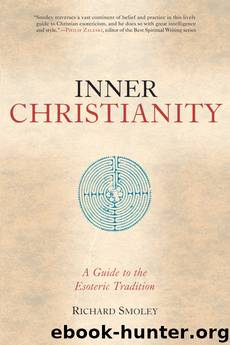Inner Christianity by Richard Smoley

Author:Richard Smoley
Language: eng
Format: epub
Publisher: Shambhala Publications
SOPHIA TODAY
Although the myth of Sophia casts a powerful light on the nature and destiny of consciousness, this light is a subtle one. Consequently, after the early centuries of Christianity, Sophia became an increasingly remote figure, particularly in the West. Only in the last 125 years has there been a widespread renascence of interest in this divine figure. This impulse was launched by the Russian mystical philosopher Vladimir Solovyov (1853–1900), who had several visions of her during his life. For Solovyov, Sophia is “the world soul, or ideal humanity . . . which contains within itself and unites with itself all particular living entities.” He regards the Logos and Sophia as practically identical. The Logos is the “primordial unity,” the condition of humanity before its descent into multiplicity. Sophia is “a second, produced unity,” created by the reintegration of the many parts of creation into one.9 Although Solovyov stops short of actually equating the Logos with Sophia, he comes close to doing so, making his views very much resemble those of primordial Christianity.
Solovyov set out these ideas in his extremely influential “Lectures on Divine Humanity.” Delivered between 1878 and 1881 and attracting an audience that included Tolstoy and Dostoyevsky, they inspired a whole current of Sophiology in Russia. The twentieth-century theologian Sergei Bulgakov, for example, saw Sophia as the very essence of the Godhead—the Being that the three Persons of the Trinity share among them. For another theologian, Pavel Florensky, she was the primordial nature of creation, the creative Love of God. The visionary Daniel Andreev held that since Christ was “begotten of the Holy Spirit,” the Father and the Holy Spirit were in fact the same Person of the Trinity. Sophia was properly the third, so that the Trinity should really consist of the Father/Holy Spirit, the Son, and Sophia.10
However ingenious these explanations may be, in the end they seem rather overcomplicated and factitious. It is simpler and clearer to see Sophia as she seems to have been originally—as the principle of consciousness that was also known as Christ.
The past generation has seen a further revival of interest in Sophia. This is due partly to a powerful grassroots impetus to recover traditional images of the divine feminine, partly to a resurgent interest in Gnosticism as a result of the work of Jung and the publication of the Nag Hammadi scriptures. Today Sophia seems to be enjoying an ever widening circle of admirers. She is the subject of an increasing number of books, and even in mainstream American denominations women’s groups have developed rites and prayers to honor this haunting and elusive figure.
Download
This site does not store any files on its server. We only index and link to content provided by other sites. Please contact the content providers to delete copyright contents if any and email us, we'll remove relevant links or contents immediately.
| Clergy | Devotionals |
| Faith | Inspirational |
| Meditations | Monasticism & Asceticism |
| Prayer | Prayerbooks |
| Ritual | Sermons |
The Secret Power of Speaking God's Word by Joyce Meyer(2968)
More Language of Letting Go: 366 New Daily Meditations by Melody Beattie(2966)
The Holy Spirit by Billy Graham(2892)
To Light a Sacred Flame by Silver RavenWolf(2767)
Tuesdays With Morrie by Mitch Albom(2683)
The Lost Art of Good Conversation by Sakyong Mipham(2574)
The Traveler's Gift by Andy Andrews(2409)
Kundalini by Gopi Krishna(2135)
A Kingsbury Collection by Karen Kingsbury(2058)
Angels of God: The Bible, the Church and the Heavenly Hosts by Mike Aquilina(1932)
Finding Chika by Mitch Albom(1926)
Anxious for Nothing by Max Lucado(1909)
Angels by Billy Graham(1886)
As a Man Thinketh by James Allen(1861)
Curse Tablets and Binding Spells from the Ancient World by Gager John G.;(1836)
The Yoga of Jesus: Understanding the Hidden Teachings of the Gospels by Paramahansa Yogananda(1803)
Barking to the Choir by Gregory Boyle(1785)
Autobiography of a Yogi (Complete Edition) by Yogananda Paramahansa(1774)
How To Be Born Again by Billy Graham(1730)
